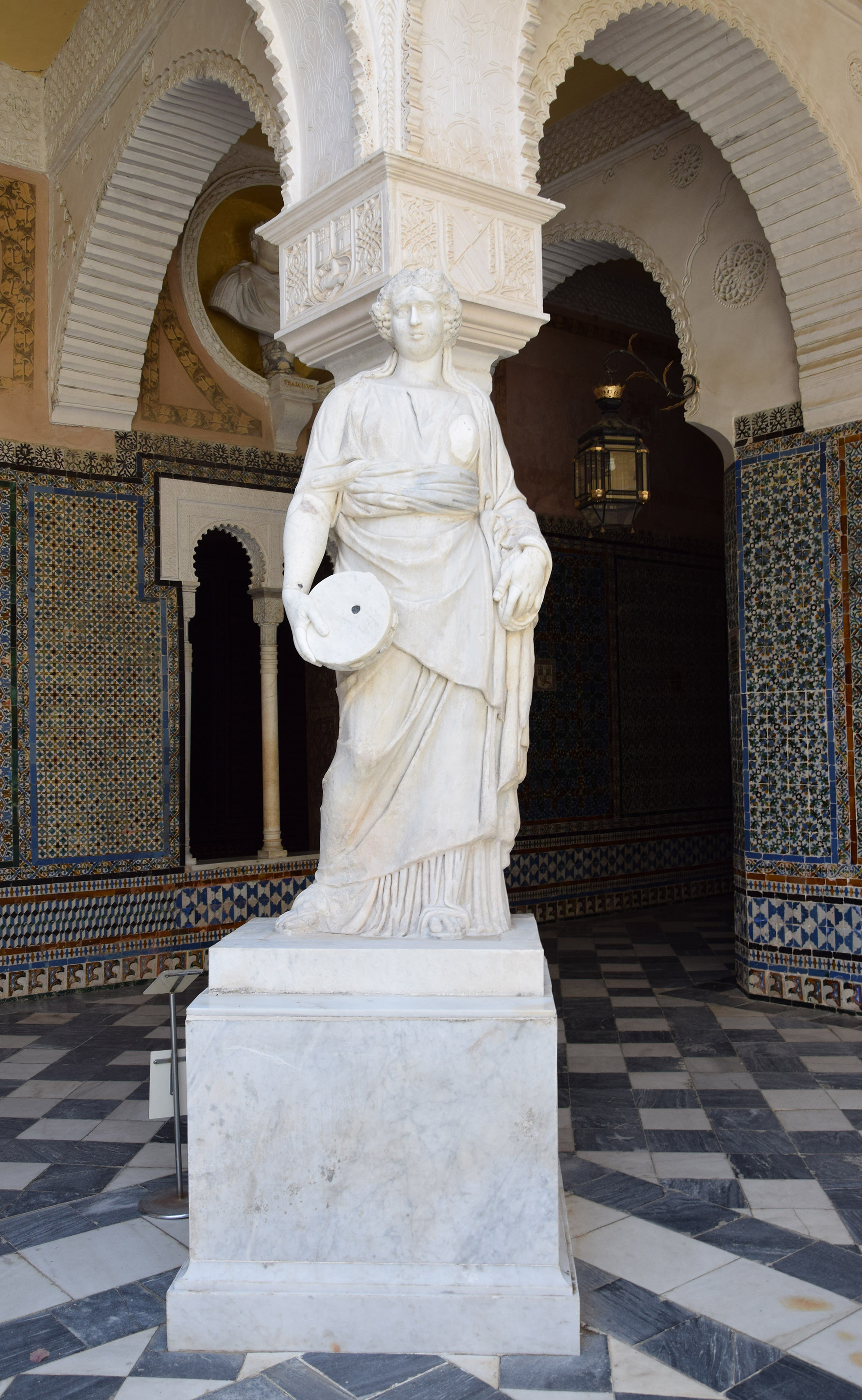A larger than life female statue carved from a single block in the 2nd century AD, the head of which was retouched during the Renaissance by carving a Dionysian crown of grapes and vine leaves, and a tambourine was added as an attribute. According to Trier University professor Markus Trunk, the original sculptural type from which this Roman replica was derived is preserved, for example, in a monumental relief from Cyrene, as well as in a statue from the sanctuary of Artemis in Thasos. The same scholar links the Renaissance retouching to the inscription ".Caupæ Syrisca"This is an obvious and curious allusion to the famous poem, traditionally attributed to Virgil, in which, by means of a tavern keeper who, with her music and dance, invites passers-by to enjoy the pleasures of her tavern, sings a hymn to life and to the carpe diemwhose last verses, in translation by Professor José Martínez Gázquez, read:
Ah, die to those old rigours!
Why do you save the soft-scented wreaths for the ungrateful ash?
Do you want a crowned tombstone to cover your bones?
"Bring out the wine and dice. Let him die who cares about tomorrow".
Death, warning us in our ear, says: "Enjoy life, I am coming".



